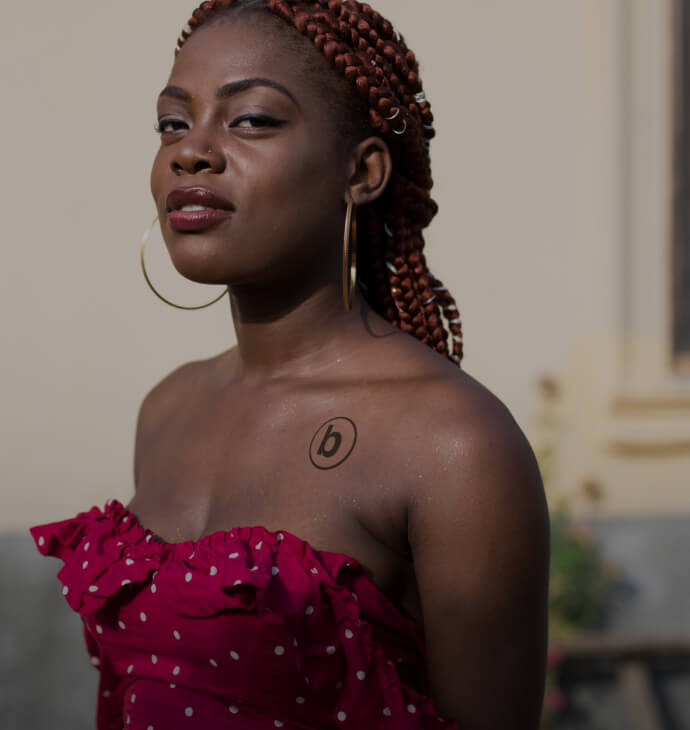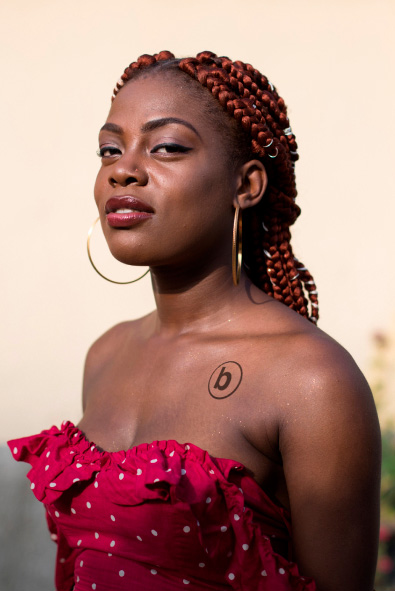

Do we need a copyright
symbol for human bodies? Raise awareness about digital violence.
Just as gender-based violence takes on many insidious forms, so does digital gender-based violence: image-based abuse aka non-consensual sharing of intimate images or “revenge porn”, cyberstalking, online harassment, sextortion, online trafficking, doxxing. The perpetrator could be a stranger on another continent or someone known next door who has weaponized technology and a target’s sexuality against her. Marginalized groups, including people with disabilities and LGBTQI individuals, may be even more vulnerable.
For survivors and victims of this sexualized abuse, like the young women whose stories are shared here, there is no distinction between real and virtual. Logging off doesn’t end the terror. The consequences are certainly all too real – fear, panic, anxiety, depression, post-traumatic stress disorder, suicidal thoughts and worse, among others. Our online and offline lives can blur into each other so as to be indistinguishable. Even if and after the violence ends, the scars endure. Survivors may limit Internet use or leave entirely, depriving themselves of community and connection, exploration and discovery, economic opportunity, education and entertainment.
Virtual violence is violence. Online abuse is abuse.
Virtual violence is violence. Online abuse is abuse. Women and girls have the right to feel safe in all spaces, wherever they are.
Like other forms of gender-based violence, this type of abuse is intended to make someone feel alone and powerless. If you have experienced digital gender-based violence, know that you are not alone – you are experiencing what many other women and girls face in this technological age. Talk with trusted friends and family. Don't allow fear or embarrassment to prevent you from reaching out for help.


Do we need a copyright
symbol for human bodies? Raise awareness about digital violence.
A virtual world free of violence is possible. UNFPA, the United Nations sexual and reproductive health agency, supports the right of all women and girls to live without fear of gender-based violence or abuse in all spaces, including online. Everyone plays a role in making this more than a hope but a reality.



The UNFPA bodyright campaign declares that women and girls own their bodies and images of their bodies and sharing them in any form without their consent is a violation of their human rights, privacy, dignity and bodily autonomy.
Sign the UNFPA and Global Citizen bodyright petition calling on technology and content companies to give women’s and girls’ bodies the same protection and respect as a legal copyrighted entity. Share the bodyright symbol to show your support for the inalienable rights of women and girls.
Anyone who shares another’s intimate images without her consent – even if a sharer is not the original perpetrator – is committing violence against women. Let the disruption start with you. See people attacking, bullying or threatening someone online? Don’t join in. Post positive messages to counter the negative. Report the abuse to the technology platform. One cybermob attack survivor said she felt seen and supported by people who defended her.
SHARE SHAREUNFPA joined the World Wide Web Foundation in its call to Facebook, Google, TikTok and Twitter to prioritize the safety of women online, holding them to the pledges made to do so during the 2021 Generation Equality Forum in Paris. But there are many more platforms. In the words of Thorn, which works to end online child sexual abuse, “We won’t achieve the goal of building an Internet that is safe until every platform with an upload button has adopted proactive detection measures.”
SHARE SHAREAccording to the Economist Intelligence Unit, “In 64 of 86 countries, law enforcement agencies and courts appear to be failing to take appropriate corrective actions to address online violence against women.” Lawmakers need to recognize the pervasive and prevalent nature of the violence and support legislative and regulatory responses that meet the needs of women and girls, including creation and resourcing of independent monitoring and regulatory bodies. For example, Australia’s Office of the E-Safety Commissioner is serving as a model for countries such as Canada and the United Kingdom in addressing online safety. Seeking justice should not have to be another traumatizing experience.
SHARE SHARE
Like other forms of gender-based violence, this type of abuse is intended to make someone feel alone and powerless. If you have experienced digital gender-based violence, know that you are not alone – you are experiencing what many other women and girls face in this technological age.
Talk with trusted friends and family. Don't allow fear or embarrassment to prevent you from reaching out for help.












